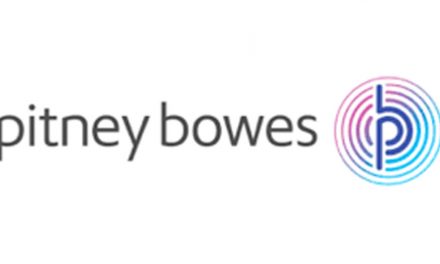
Do your customers love their bills?

Clive Stringer, Business Development Director for Pitney Bowes, argues that transactional mail can play a key role in improving the customer experience. Businesses are working harder than ever to achieve cut-through and gain a competitive advantage in today’s omnichannel environment. Every communication must generate engagement, interest and excitement, as digital integrates with physical, from marketing emails to social media posts to direct mail.
Transactional mail is no exception: organisations are now using it as valuable communications tool. Invoices, statements, renewal notices, quotes and policy documents are no longer simply a prompt for payment or a means of regulatory compliance. Instead, they have a key part to play in a communications strategy designed to improve the customer experience.
Whilst the structure and content of our physical mail deliveries is changing with a greater volume of parcels and packages, transactional mail remains a constant. Herein lies its value: we might opt out of receiving advertising material through our doors, or prefer to receive offers and vouchers online, but research proves that we still want to receive our transactional documents in physical format. A new study1 from international research company Toluna questioned 7000 consumers worldwide, and found that 52% of respondents said they needed the option to receive printed documents, bills, tax forms and other transactional items because they provide a more permanent record. 51% of respondents in an InfoTrends survey2 really valued their transactional mail as a reminder to make payment, and looking forward to 2019, 59% of bills and statements are still forecast to be delivered on paper.
We appreciate the credibility, integrity and security of print on paper. Toluna’s research found that respondents across all age groups showed a strong preference for printed documents, with 80% preferring to read print on paper than from a screen. We value its tangibility: 79% of people surveyed said they enjoyed the tactile experience of paper and print.
Organisations are responding to this consumer preference and market opportunity by sending personalised, engaging transactional mail which includes relevant, meaningful marketing messages. Now, the ability to do this isn’t a privilege reserved for large-scale mailing operations but is a strategy available to all. This is the result of high-performance print and mail technologies -right-sized to fit a diversity of businesses, levelling the playing field and creating new opportunities for businesses to become world-class. For some, it could become a new revenue stream as InfoTrends’ study reveals that 59% of consumers would be in favour of providers using part of the space on the bill for relevant advertising.
Here are ten ways your transactional mail can work harder:
- Make good use of full-colour, high performance inkjet for visually-engaging messages
- Personalise both the envelope outer and insert
- Include your logo on the envelope outer, on the insert and on the Business Reply Envelope too for brand consistency
- Include cross-channel references – you can use a printed bill to drive respondents to an interactive personalised video, to educate and engage them, or to promote your payment app for example
- Fold what you’re sending: it costs more to send a large envelope than a small envelope, even if the content within it is the same. An A4 sheet can be folded three times into a DL envelope, which is 110 x 220mm. Folding a document three times manually can be laborious but automated folding machines can do that for you quickly and efficiently
- Select print and mail technologies which work together rather than operate separately, configuring high performance mailing technologies with digital platforms, for example
- When it comes to data, make ‘Identify, Locate, Communicate’ your mantra: know who you’re sending to and exactly where they’re located, avoiding the cost and compliancy issues of undelivered or wrongly delivered transactional mail
- Track your mail: you can track what your sending to make sure the right people get the right mail at the right time
- Follow it up with a courtesy call to check your customer is getting the most from their account, which will also help you elicit information to further improve the customer experience – updated mobile numbers or email addresses for example
- Include vouchers and offers with your mail to build loyalty and add value
Receiving physical mail makes us feel valued: a study from the Royal Mail3 found that 57% of consumers surveyed said that receiving physical mail made them feel more valued, compared with only 17% saying this of email. It’s time for organisations to tap into this, and nurture the opportunity transactional mail presents. Bills don’t have to be boring – they have a key part to play in a customer contact strategy.
1 Research carried out in June 2016 by Toluna
2 Annual State of the Transactional Communications Market Survey, InfoTrends, 2016
3 The Value of Mail, Royal Mail











